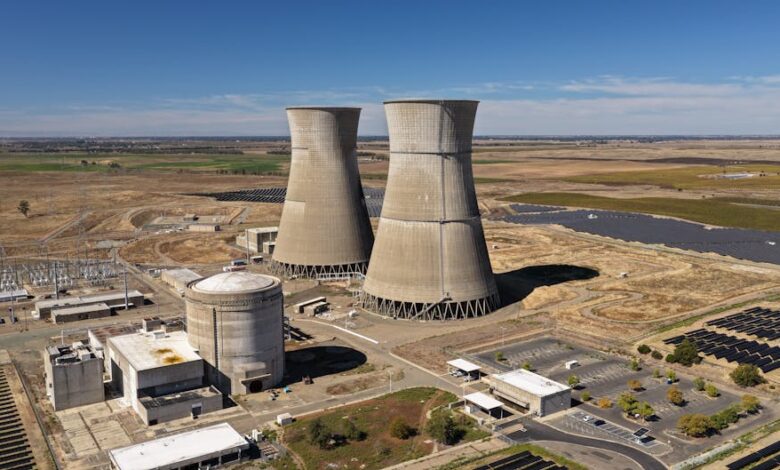The Hidden Drain: Why Businesses Overspend on Electricity

Ever walked past a massive corporate building at night, lights blazing, knowing it’s largely empty? Or perhaps you’ve seen a data center humming away, consuming immense power, and wondered if all that energy is truly being used efficiently, all the time? For large enterprises across industries, managing electricity consumption isn’t just about turning off lights. It’s a complex, often expensive dance between ensuring peak operational capacity and grappling with the reality of fluctuating demand.
The truth is, many large organizations routinely buy far more electricity than they actually use. It’s a safety net, a buffer against unexpected spikes, and often, just the nature of traditional utility contracts. But what happens to that excess capacity? Historically, it’s just… wasted. A financial drain, an environmental cost, and a significant missed opportunity. This isn’t just a minor inefficiency; it’s a genuine conundrum that has plagued facility managers and CFOs for decades. But what if there was a way to not just reduce that waste, but to turn it into a revenue stream? Enter COI Energy, a name you’ll soon hear a lot more about, especially as they gear up to present their groundbreaking solution at TechCrunch Disrupt 2025.
The Hidden Drain: Why Businesses Overspend on Electricity
Imagine a sprawling manufacturing plant, an expansive university campus, or a massive retail chain. Their energy needs are colossal and unpredictable. Production schedules shift, student populations ebb and flow, and consumer traffic varies wildly. To avoid costly downtime or power outages, these entities typically sign contracts for maximum possible demand, essentially over-provisioning their electricity supply.
This strategy makes sense from a risk management perspective. No one wants to be the executive explaining why the lights went out or the production line halted. However, this safety-first approach comes with a hefty price tag. That unused electricity isn’t free. Businesses pay for capacity that often sits idle, sometimes for hours, days, or even weeks at a time.
Beyond the direct financial cost, there’s the environmental impact. Generating electricity, even from cleaner sources, leaves a footprint. Wasting it means that footprint is larger than necessary. In an era where corporate sustainability goals are paramount, this hidden waste is a significant hurdle. It’s a systemic issue, deeply embedded in how large-scale energy procurement has traditionally worked, and it represents billions in potential savings and revenue waiting to be unlocked.
The Complexities of Traditional Energy Contracts
Utility companies often structure their billing based on both energy consumed (kilowatt-hours) and peak demand (kilowatts). Even if a business uses very little energy for most of the month, a single hour of high usage can set their demand charge for the entire billing cycle. This incentivizes over-provisioning, creating a vicious cycle of paying for more than what’s consistently needed. It’s a system designed for stability, but one that inadvertently punishes flexibility and efficiency.
COI Energy: Turning Waste into Revenue and Resilience
This is where COI Energy steps onto the stage, not just with a new idea, but with a patented platform that fundamentally shifts the paradigm. Their solution addresses the core problem: what do you do with that excess electricity capacity? The answer is elegant in its simplicity and powerful in its implications: you sell it, or you share it.
COI Energy’s platform creates a dynamic marketplace for unused electricity. Imagine a large data center that has surplus power during off-peak hours. Instead of letting that capacity sit idle, COI Energy enables them to sell it back to the grid, or even to a neighboring business that might be experiencing a temporary energy crunch. This isn’t just about demand response – where businesses reduce consumption in exchange for payment – it’s about active participation, transforming passive consumers into active energy providers.
The benefits are multi-faceted. Firstly, for enterprises, it transforms a sunk cost into a new revenue stream. That previously wasted capacity now has market value. Secondly, it contributes to grid stability. By making unused power available, COI Energy helps balance supply and demand, reducing the reliance on ‘peaker plants’ and enhancing overall energy resilience. This is particularly crucial as grids become more complex with the integration of renewable, but intermittent, energy sources.
Beyond the Bottom Line: A Sustainable Shift
The implications for sustainability are profound. By optimizing existing energy resources, COI Energy reduces the need for new power generation. It promotes a more efficient use of our current infrastructure and helps large organizations meet and exceed their environmental targets. In a world increasingly focused on ESG (Environmental, Social, and Governance) factors, this platform offers a tangible way for businesses to demonstrate their commitment to a greener future, not just through internal efficiency, but by actively contributing to a more sustainable energy ecosystem.
Furthermore, this dynamic energy sharing fosters a more collaborative energy landscape. Businesses aren’t just isolated consumers; they become interconnected nodes in a smarter, more responsive energy grid. This shift empowers businesses with greater control over their energy footprint and expenditures, moving away from a purely reactive stance to a proactive, value-generating one.
What This Means for the Future of Energy Management
COI Energy isn’t just offering a new product; they’re proposing a foundational change in how large enterprises interact with the energy market. Their patented platform represents a significant leap towards a more distributed, decentralized, and intelligent energy grid. It envisions a future where energy flows not just from central power plants outwards, but also between businesses, dynamically adjusting to real-time needs and opportunities.
This approach paves the way for what’s often called a “smart grid,” where data, automation, and real-time insights orchestrate energy flow with unprecedented efficiency. Businesses become integral components of this smart grid, able to monetize their flexibility and contribute to a more robust and resilient energy infrastructure. It’s a move from a one-way street of consumption to a multi-lane highway of energy exchange.
Catching the Spark at TechCrunch Disrupt 2025
The fact that COI Energy will be showcasing its solution at TechCrunch Disrupt 2025 speaks volumes. Disrupt is where the next big things are unveiled, where innovative ideas are put under the microscope of the tech world’s most discerning minds. Their presence there signals not just a promising technology, but a genuine disruptor in the energy sector – one that has the potential to redefine energy management for large enterprises globally. It’s a recognition that their solution isn’t just a niche optimization but a transformative force with broad market applicability and significant economic and environmental impact.
A Smarter Grid, A Greener Tomorrow
The conundrum of wasted electricity has long been a quiet inefficiency in the corporate world. COI Energy’s approach of empowering businesses to sell and share their unused electricity isn’t just a clever technological fix; it’s a strategic pivot. It turns a liability into an asset, a cost into revenue, and waste into sustainability. As we look towards a future demanding greater energy efficiency and grid resilience, solutions like COI Energy’s are not just beneficial – they are essential. Their appearance at TechCrunch Disrupt 2025 is a testament to the powerful, positive change they’re poised to bring, marking a pivotal moment in how we think about and manage our most vital resource.





